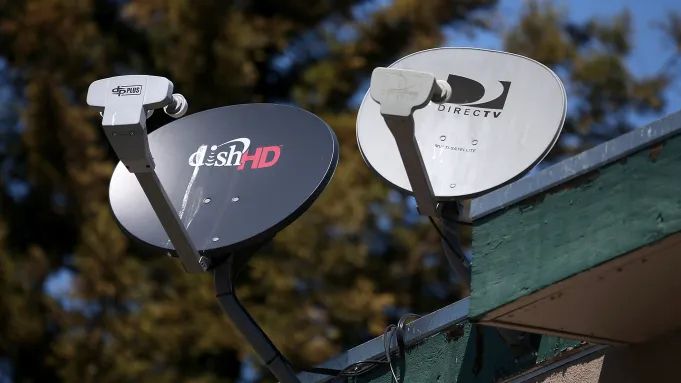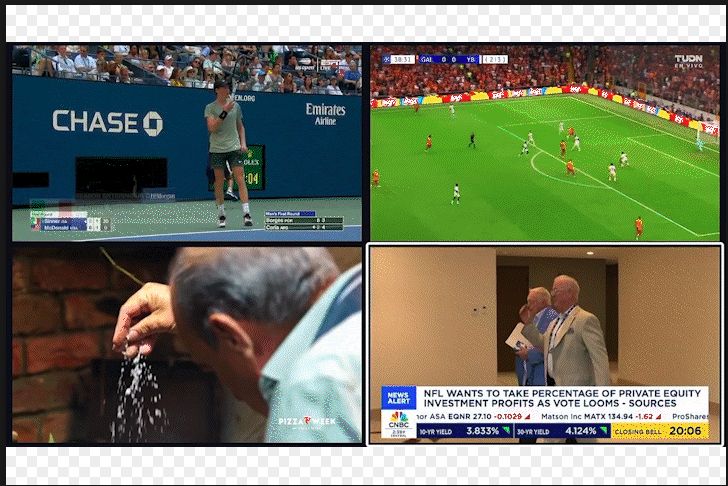Hey, Time Warner: Walk Away From Adelphia
The sale of Adelphia Communications to Time Warner Cable has dragged on for months. The deal breezed through antitrust review long ago, but bickering among Adelphia's many creditors and gridlock at the Federal Communications Commission threaten to push the deal perilously close to its July 31 drop-dead date. The cancellation deadline gives Time Warner Cable a chance to do something that makes a lot of sense and would make many people on Wall Street happy: Walk away.
Time Warner does not need this deal. One major justification—Time Warner Cable's need to get bigger to compete with giant telephone companies—is overblown. The financial gains from bringing Adelphia's relatively weak properties up to Time Warner Cable's standards could be far smaller than expected, a problem best demonstrated by Time Warner's partner in the Adelphia bid, Comcast. Comcast bought AT&T Broadband in 2002, orchestrated a remarkable turnaround yet got no apparent reward in its stock price.
If Time Warner scuttles the deal now, breach-of-contract lawsuits will commence. But if the creditor mess extends past the drop-dead date, Time Warner could walk without penalty and—under some circumstances—even pocket a breakup fee.
Some Wall Street executives believe that the company would do better buying back more of its own stock, waiting for a better set of cable systems to come on the market, or beefing up its TV programming or film portfolio.
“Strategically, it did not make sense for the preeminent content company in the world to be buying distribution assets,” says Morris Mark, CEO of hedge fund Mark Asset Management.
Nonetheless, Time Warner executives aren't wavering. “We remain confident that the value that drove this transaction in the first place is still there,” Time Warner Cable Chairman Glenn Britt said at an investor conference last week.
The deal would be far more attractive if Time Warner were getting a fire- sale price. Time Warner and Comcast bid $17.6 billion, with Time Warner Cable putting up the bulk of the cash and all of the stock in the transaction. That's $3,500 per subscriber—hardly a bargain price in this market.
Broadcasting & Cable Newsletter
The smarter way to stay on top of broadcasting and cable industry. Sign up below
The deal calls for Adelphia to receive $12.7 billion in cash and 16% of the common stock of Time Warner Cable, whose shares will start trading publicly. Time Warner Cable and Comcast will divvy up Adelphia systems serving 5.2 million subscribers scattered across 31 states. The two cable operators will further swap systems from their existing portfolios to create stronger geographic clusters.
The deal will also allow Comcast to fulfill its promise to regulators to unwind its 21% ownership of Time Warner Cable, something inherited in a past deal.
At the end of the day, Time Warner will grow from 10.9 million subscribers to 14.4 million.
To Time Warner executives, that extra size is critical. One exec argues that the company is facing an “onslaught” from telephone companies. “Verizon, all by itself, is bigger than the entire cable industry,” the executive says. “We need to be bigger.”
But Time Warner's increase in size wouldn't be all that dramatic. The company is already the second-largest cable operator, behind Comcast's 21 million subscribers. Comcast got that large when it acquired AT&T Broadband, nearly tripling in size.
“I just don't see the big advantage in Time Warner going from 11 million subs to 14 million,” says Morgan Stanley media analyst Richard Bilotti. “Local concentration is important in cable, but national size is not.”
The deal does give Time Warner one lucrative local cluster: Los Angeles. Today, the company is a fairly small player in Southern California. Snagging Adelphia and Comcast's systems will give it 75% of the market, a perfect match for the company's dominance of New York City.
Otherwise, the deal will primarily bolster Time Warner Cable's clusters in upstate New York by adding Buffalo; in Ohio by adding Cleveland and a host of smaller cities; the Carolinas and Maine.
That's not nearly as tantalizing as a deal everyone would cheer: Cablevision Systems' lucrative cluster that surrounds Time Warner's New York City systems. Turmoil among Cablevision's Dolan family will send those properties on the market sooner or later.
Time Warner executives also tout the gains they expect from turning the company around. The scandal-plagued company was miserably run even before founder John Rigas and his sons were chased out. New CEO Bill Schleyer and COO Ron Cooper were having trouble for a while but have lately shown remarkable strength, improving operating cash flow and completing a major rebuild of the long-neglected systems.
Time Warner hopes to raise the cash-flow margin on the new systems from 32% to 38%, invigorate Adelphia's high-speed Internet business, and launch telephone service.
There is little doubt that Britt and COO Landel Hobbs can hit their mark. The problem is, Wall Street may simply not care. Comcast achieved an even more dramatic turnaround with the AT&T Broadband systems, lifting margins from the mid-20% range to 40% a year ahead of schedule. But the company hasn't realized much financial gain as a result. As senior Comcast executives frequently lament, they've performed magic with AT&T yet their shares are trading at a lower price and lower multiples than they fetched before that deal.
A last major justification is untangling Comcast's ownership interest. Antitrust regulators frowned on such a significant link between the two largest cable operators—a legacy of the AT&T deal. As part of the various system swaps, Comcast will give Time Warner that stock back.
Fine, but that's Comcast's problem, not Time Warner's. Without the Adelphia deal, Comcast can simply sell its stake to the public. Time Warner should let 'em at it. It's not elegant, but there's little hazard for the company.
Time Warner should keep its powder dry. There will be other, more valuable deals down the road.
E-mail comments to jhiggins@reedbusiness.com


















